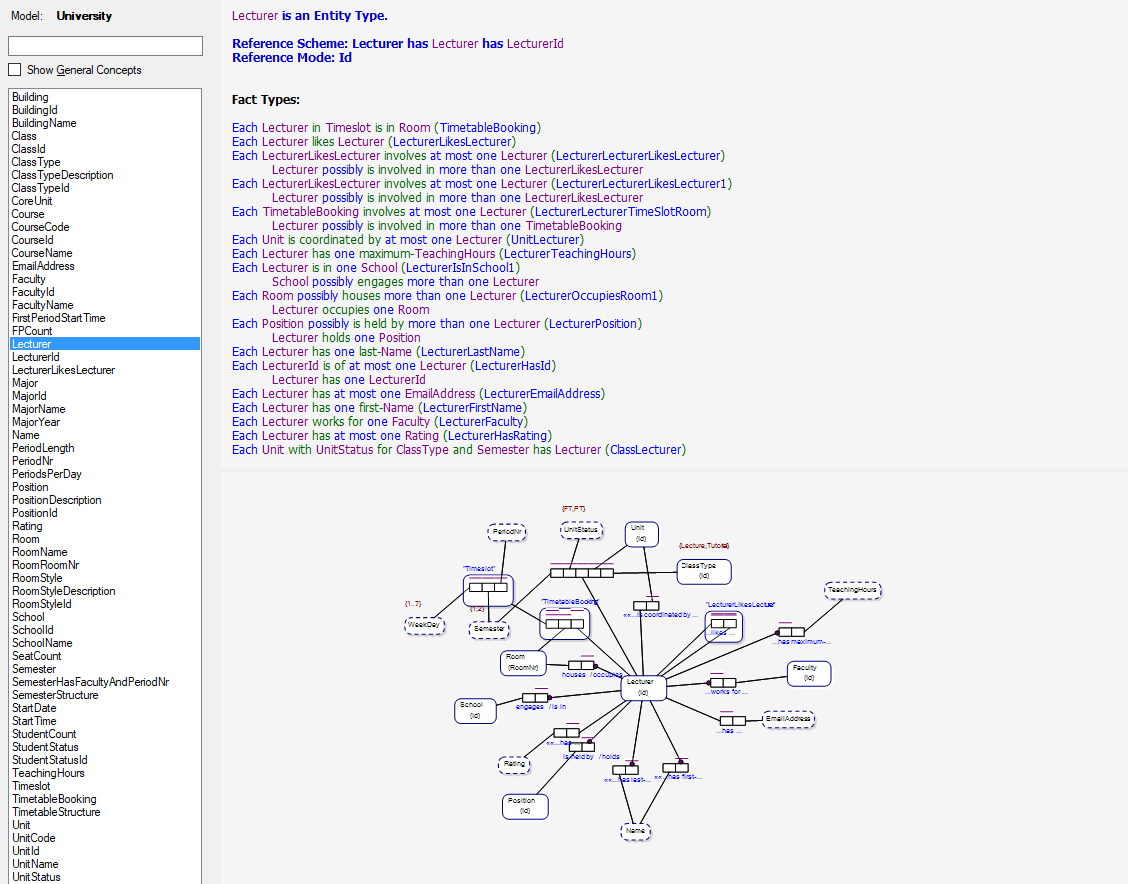Semantic Modelling
Capture your business rules in natural language to streamline data management within your organisation. Engage with FactEngine for the tools and methodology to implement a culture of conceptual and semantic modelling among your key stakeholders.
Semantic modelling is a process of representing and capturing the meaning or semantics of data, concepts, or objects in a structured and formal way. It involves creating a conceptual model or schema that defines the relationships and properties of the objects or entities in a domain, and the rules/constraints that govern their behaviour.
Done right, semantic modelling allows you to visualise your enterprise or system schema as a set of natural language verbalisations and business rules, as in Boston's Glossary View:

FactEngine and the Boston conceptual modelling software capture semantic models in Object-Role Modeling and verbose forms of Entity Relationship Diagrams and Property Graph Schema, which may be expressed in natural business language, expressing constraints and business rules in terms easily understood by stakeholders.
In the context of computer science and artificial intelligence, semantic modelling is often used to create models of knowledge domains, such as ontologies, taxonomies, and knowledge graphs, which can be used to reason, analyse, and understand information. These models can be used to improve information retrieval, natural language processing, and even machine learning algorithms, as well as to facilitate communication and collaboration among people and systems.
Semantic modelling is important in enabling people to understand the meaning and context of information, and in supporting intelligent decision-making and problem-solving.
